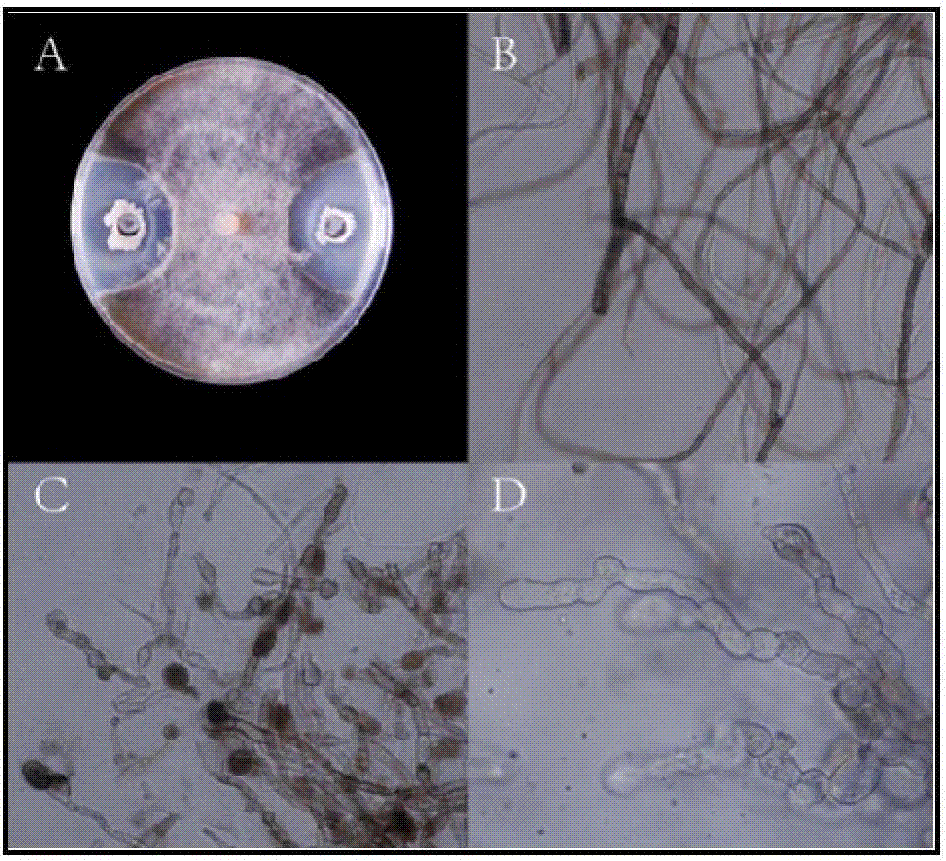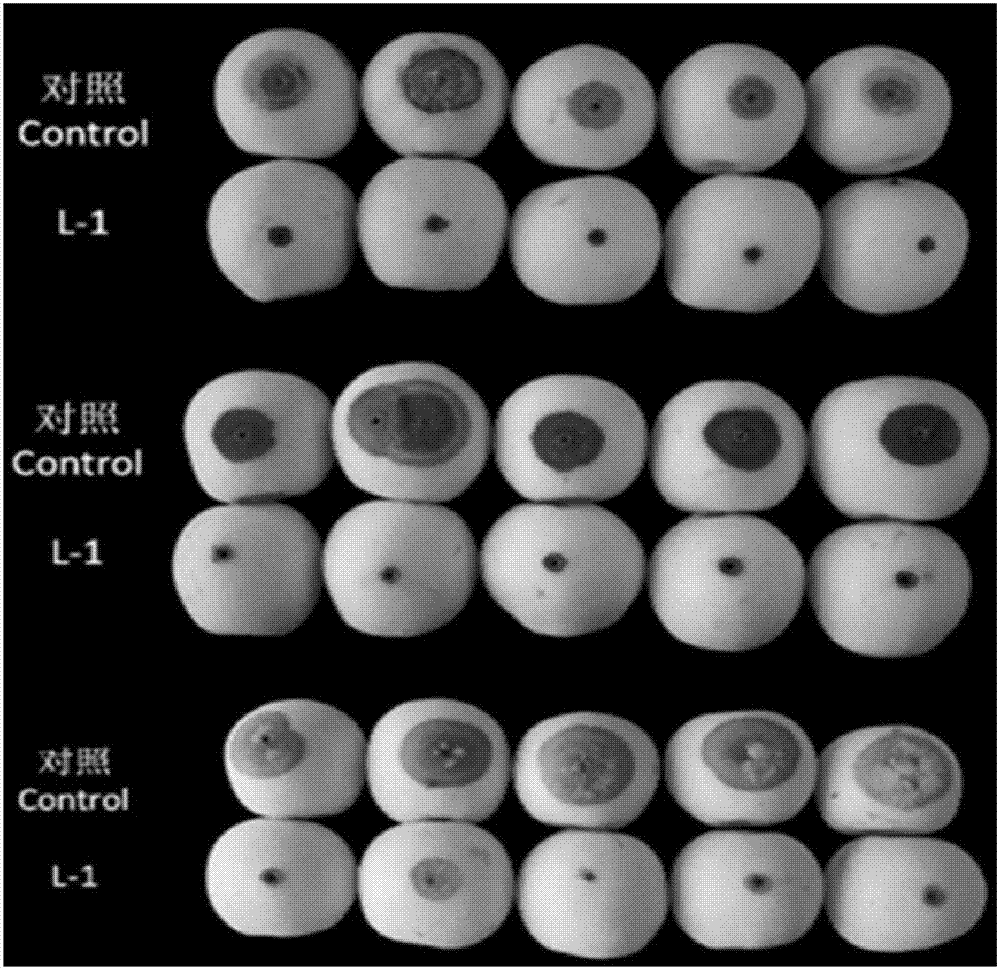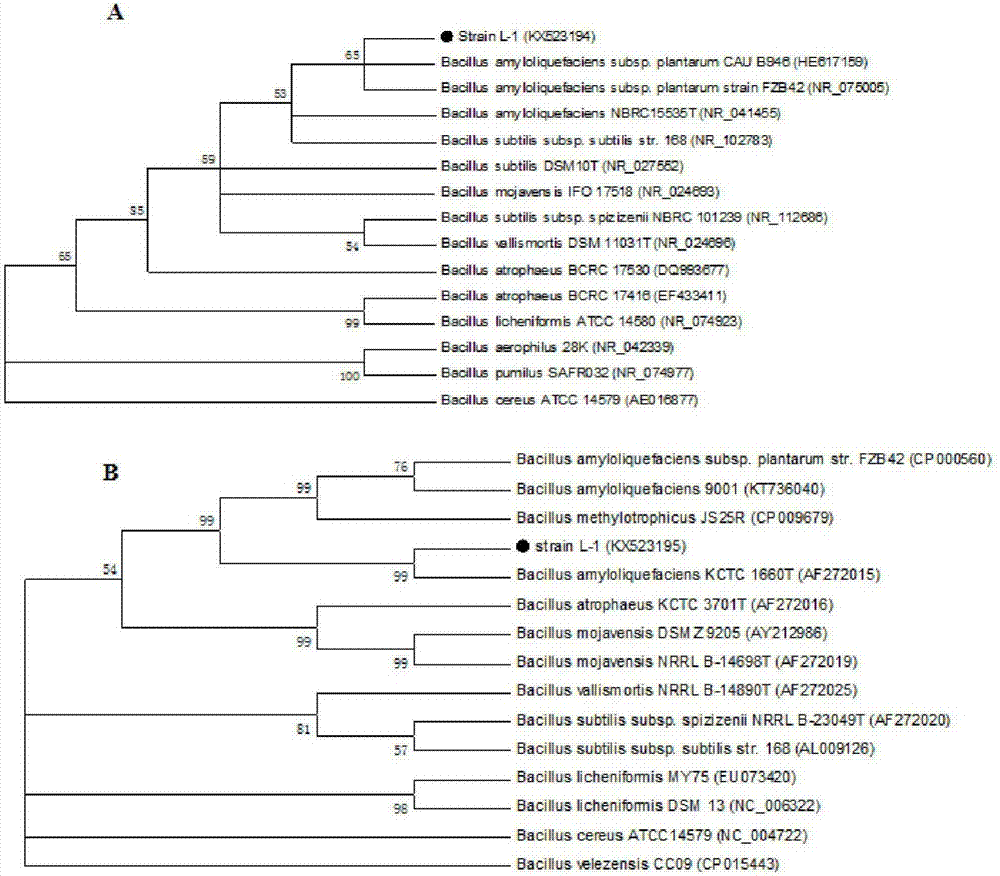Bacillus amyloliquefaciens L-1 for antagonizing pear disease and application thereof
A technology of Bacillus powdery and Bacillus subtilis, applied in the field of microorganisms, can solve the problems of high residues, pome fruit diseases, etc., and achieve the effects of strong specificity, maintaining ecological balance, and reducing the residues of pome fruit chemicals
- Summary
- Abstract
- Description
- Claims
- Application Information
AI Technical Summary
Problems solved by technology
Method used
Image
Examples
Embodiment 1
[0025] The isolation of embodiment 1 bacterial strain
[0026] In September 2015, the rhizosphere soil of pear trees was collected in Xingcheng City, Liaoning Province, and the bacteria in the soil were separated by the dilution plate method (Herr, 1959). Weigh 10 g of the dried soil sample and grind it thoroughly, transfer it to a Erlenmeyer flask containing 90 mL of sterile water after grinding, and fully shake at 120 r / min at 4 °C for 30 min. Dilute the soil sample suspension step by step in the ultra-clean workbench, draw 100uL of the diluted solution and evenly spread it on NBA (Nutrient Broth Agar) (3g beef extract, 5g peptone, 2.5g glucose, 20g agar powder, 1L water) medium cultured at 32°C for 1 day, and a single colony was picked and purified on NBA medium. After purification, 90 single colonies were transferred to new NBA medium and kept for future use.
Embodiment 2
[0027] Embodiment 2 Active strain screening
[0028] Adopt the plate confrontation method (Khamna et al., 2009) to measure the inhibitory activity of 90 strains of bacteria isolated to R. pear rot bacterium, concrete operation is as follows: pick respectively on PDA medium (potato dextrose Agar) (6g potato extract powder , 20g glucose, 20g agar powder, 1L distilled water) for 5 days, put the ringworm bacteria cake with a diameter of 6mm in the center of the PDA plate, punch holes on both sides of the pathogenic bacteria cake 3cm away, deduct the medium and inoculate it on the NBA medium Bacterial cakes to be screened that had been grown for 2 days on the tube were incubated at a constant temperature of 25°C. Each treatment was repeated 3 times, and the plate not inoculated with actinomycetes was used as the control. When the control colonies covered the plate, observe and record the diameter of the inhibition zone. The result is as figure 1 Shown: bacterial strain L-1 has si...
Embodiment 3
[0029] Example 3 Control Effect of Active Bacterial Strain L-1 on Common Fruit Postharvest Diseases of Apples and Pears
[0030] The antagonistic effect of L-1 on pear black spot, gray mold, brown rot, penicillium, and apple anthracnose and mold core diseases was determined by Oxford cup method. The L-1 strain was transferred into 100ml NB culture medium, and cultured at 28°C and 180r / min for 2 days. Inoculate the pathogenic bacteria cake to be tested in the center of the PDA plate, place sterilized Oxford cups on both sides, and add 200ul of L-1 fermentation broth to the Oxford cup, and add NB culture fluid without L-1 spores as a control, Incubate at a constant temperature of 25°C and repeat 3 times for each treatment. The growth diameter of the pathogenic bacteria was measured in the control dish, and the control effect was calculated by (control effect (%)=(1-treatment lesion diameter / control lesion diameter)*100). The results are shown in Table 1. Strain L-1 has signifi...
PUM
 Login to View More
Login to View More Abstract
Description
Claims
Application Information
 Login to View More
Login to View More - R&D
- Intellectual Property
- Life Sciences
- Materials
- Tech Scout
- Unparalleled Data Quality
- Higher Quality Content
- 60% Fewer Hallucinations
Browse by: Latest US Patents, China's latest patents, Technical Efficacy Thesaurus, Application Domain, Technology Topic, Popular Technical Reports.
© 2025 PatSnap. All rights reserved.Legal|Privacy policy|Modern Slavery Act Transparency Statement|Sitemap|About US| Contact US: help@patsnap.com



